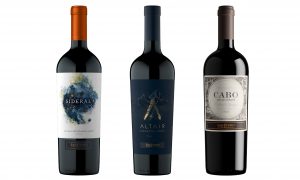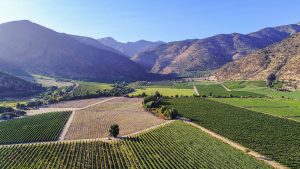Two decades ago, the global wine scene was turned on its head following the emergence of a number of premium wines from the New World. Chile played a major part in this upheaval, thanks to the great quality of the wines hailing from the country’s top terroirs. Having been key to Chile’s triumphant arrival at the top table, Sideral and Altair soon found their place among the fine wine elite.
A grand cru classé philosophy in a Chilean terroir
Over the past 150 years, San Pedro has become one of Chile’s most important wineries, and its wines are now available in over 80 countries. While investing in its expansion overseas, the winery founded by the Correa Albano brothers explored every corner of its home country, developing terroir-driven wines of outstanding quality.
Staying true to the pioneering spirit of its founders, in 2001, Viña San Pedro established a joint venture with prestigious Saint-Émilion producer Château Dassault, in the Andean Valley of Cachapoal.

Thus Viña Altair was born: an innovative project that applies the savoir faire of a Bordelais Grand Cru Classé to the Cachapoal Andes, one of Chile’s most extraordinary terroirs. The result were two exceptional wines: Altair and Sideral.
Both wines were assemblages designed to showcase the very best of the excellent quality Cabernet Sauvignon from the Cachapoal Andes, blended with Carménère, Syrah, Merlot, Cabernet Franc and other local varieties, and aged for over a year in French oak. First produced in the 2002 vintage, and released in 2004, these wines have been icons of Chilean high-end viticulture since then.
Sense of place: character and identity
Today, Viña San Pedro Cachapoal Andes – the name eventually adopted for Viña Altair – is the home of Viña San Pedro’s flagship wines, overseen by winemaker Gabriel Mustakis. ‘The Cachapoal Andes is a privileged terroir: the diverse soils, formed over millennia, offer great complexity. With our carefully honed, sustainable, plot-focused methods we are able to craft elegant, unique wines with a real sense of place.’

Since the winery was founded, it has been equipped with the latest technology, including gravity-fed flows, and fermentation and ageing vessels from different materials. These make it possible to produce great wines, each with its own distinct character: alongside the famous Altair and Sideral, stands Cabo de Hornos, a top-class Cabernet Sauvignon hailing from an estate massal-selection vineyard.
Speaking about the evolution of these wines, Mustakis says that ‘over time we’ve studied and adapted our processes to enhance the identity of our vineyard. There is no doubt that the most important aspect of this has been changes to the work in the vineyard so as to obtain the best grapes.’ He also highlighted the detailed approach in the cellar: ‘we use different winemaking and ageing strategies that allow us to express and empower the natural attributes of each plot with its specific exposure, soil profile and grape variety. These nuances result in inimitable, refined wines with an authentic identity.’








